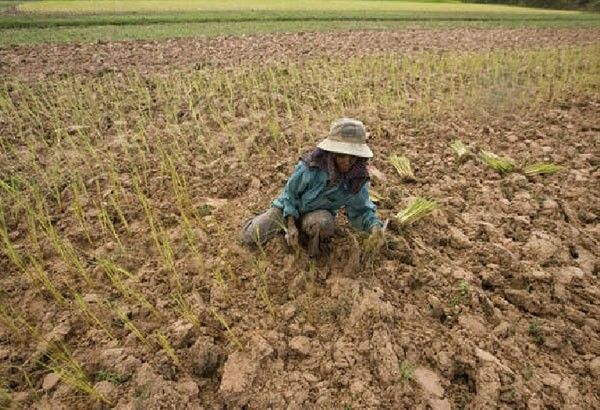Filipinos not really worried about drought — study

MANILA, Philippines — Despite drought being fairly common in the Philippines, Filipinos show varying levels of concern about the weather phenomenon, according to Harvard Humanitarian Initiative (HHI) study conducted in 2017.
The HHI study DisasterNet Philippines, which had 4,368 adult respondents, is the first nationwide household survey on disaster preparedness in the Philippines.
According to the study results, on national average, only 12 percent of Filipinos reported feeling extremely concerned, 24 percent were concerned, while 21 percent were somewhat concerned, 16 percent a little concerned, and 26 percent not at all concerned about being affected by drought.
In regions where the Philippine Atmospheric Geophysical and Astronomical Services Administration (Pagasa) has identified provinces that are experiencing less rainfall in the last five months associated with the weak El Niño in the Pacific Ocean, less than half of each region’s population expressed any concern about being impacted by drought.
In Zamboanga peninsula, where Zamboanga del Sur and Zamboanga Sibugay have been experiencing drought since February this year, only 25 percent were concerned about drought before the dry spell. Zamboanga City, Zamboanga Sibugay and Pagadian City have been placed under a state of calamity.
In Northern Mindanao, where the provinces of Bukidnon and Misamis Oriental have lost at least P292 million in agriculture this year due to the effects of El Niño, as reported by the Department of Agriculture, 57 percent were concerned about drought before the disaster hit.
In Ilocos region, where drought has been present in Ilocos Norte since last month, and dry spell is likely in Ilocos Sur and La Union, 41 percent were concerned.
In the now defunct Autonomous Region in Muslim Mindanao (ARMM), where Sulu and Maguindanao are threatened by drought, 39 percent thought they will likely be affected by drought.
In Mimaropa, where drought is also expected in Palawan, Occidental Mindoro and Oriental Mindoro, 47 percent were concerned.
The lowest level of concern was reported in the National Capital Region (NCR) with only 11 percent while the highest was in Soccsksargen with 67 percent.
Davao, the region with the second highest level of concern (63 percent), had experienced drought in 2016. Palawan, Zamboanga del Sur, Zamboanga Sibugay, Maguindanao and Sulu had also been hit by drought in the same year, while Occidental Mindoro had experienced dry spell, according to PAGASA data.
In terms of preparedness, a mere 2.4 percent of the country’s population reported having a plan for drought.
PAGASA predicts this year’s weak El Niño will last from March to May. Rainfall is expected to become normal from June to August.
Fewer Filipinos, 4.3 percent, think that the delayed onset of the rainy season is a consequence of climate change. However, a significant part of the population, 42 percent, believe the impacts of climate change pose a high level of threat to them and 83 percent said they had experienced the effects of climate change.
HHI is a university-wide academic and research center at Harvard University that brings an interdisciplinary approach to promoting understanding of humanitarian crisis.
A core project of HI’s resilient communities program, DisasterNet seeks to support local and national capacity for disaster preparedness and response. It has two sites – Philippines and Bangladesh.
- Latest

























